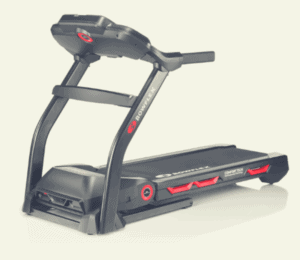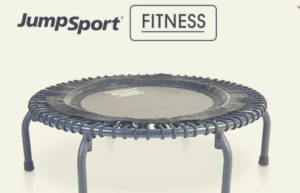Several years back, a few areas of high stress converged on me, and I made no time for my health.
Too many happy hours disrupted my sleep quality.
My chronically unrested state gave me lunch time burrito cravings, and left me no energy for the gym.
I was gaining weight.
I wanted a more flat midsection, and I knew I had to do something.
Looking back, I can see ten major areas where I made sustainable changes.
Whole body health is a major time commitment, but it’s worth it. These ten rules will help you get sexier abs, but they are also the building blocks for total body health support.
1) Support System
There is so much more to achieving body goals than “calories in vs. calories out.”
Every body is its own ecosystem of unique nutritional needs.
Historically, we already knew this.
Ancient scientific minds created the system of Ayurveda to describe different body types and construct ideal nutrition for each.
In the Middle Ages, people were said to have one of several predominant “humors” that influenced everything from personality to the body’s illness susceptibility.
Medical science now knows that several hormones interact to drive appetite. The experience of hunger is very different in different people, partly because of these hormonal metabolic processes.
With a system as complex as your body, it’s worth investing in medical assessment and advice. Think of these professionals as your team.
Primary Health Care Provider
Most physicians are not trained with effective strategies for either weight loss or nutrition-supported health.
That said, we all need a relationship with a primary care provider.
At your next appointment, ask about hormone levels that can affect metabolism, and whether any of those are indicated in your bloodwork.
Sometimes weight gain indicates low thyroid hormone or insulin resistance.
Endocrinologist
If your goal includes losing a significant amount of weight, or if you have thyroid, insulin, or other hormonal imbalances, it might be worthwhile to visit a specialist like an endocrinologist.
These specialists can help you understand your hormone profile.
Different hormone levels can affect your experience of appetite, your body’s response to exercise, and your personal nutritional needs.
Licensed Nutritionist or Registered Dietician
Working with a nutrition specialist using your personal goals and medical information, you can create a personalized nutrition plan.
It should fit your caloric needs based on your activity level each day, and be adjustable as your fitness level and exercise intensity increase.
You can learn a lot from a nutritionist about how to read ingredient labels and balance all of the nutrients you need.
More importantly, only properly licensed specialists can legally provide individualized diet advice in many states.
Mental Health Counselor
Mental and emotional issues around our bodies, food, and exercise are incredibly common.
They don’t have to be barriers to your progress.
Your commitment to your health and fitness goals will be stronger because your internalized body judgments won’t interfere with making healthy choices in each present moment.
2) Nutrition and Food Journal

Eat Enough
Your mind and body need sufficient calories and nutrients to get you through your life.
You don’t have to build your entire nutrition plan around a rigid calorie maximum in order to build awareness of your daily nutrition, appetite, and impulses.
Writing a daily journal of what you have eaten and its basic nutritional profile is a way of taking data on yourself.
You can track imbalances and plan to correct them in the future. You can also keep notes of your mood and stress level in order to observe their influence on your food choices.
There are plenty of programs designed to help keep up with calories and nutrition.
Be willing to stick with one plan for thirty days to decide whether or not it works for you, and be willing to move on to a new experiment if you find a particular program is not manageable.
How Much Is Too Much?
Whether and how much to cut your calorie intake should be a highly individualized decision.
If you have internalized a lot of judgmental language around your body or your food choices, it is probably difficult to engage nutritional support in a healthy way.
You can work with your therapist and nutritionist about healthy goal-setting, setbacks, and any emotions that come up for you.
For planning purposes, you can use a basic calorie calculator as a guideline for what you need.
3) Reduce Sugar
The more I reduce sugar from my overall diet, the less influence my sweet tooth has over my choices.
My understanding of this began years ago, when I converted to drinking my coffee black. I always put milk and a teaspoon or so of sugar into two or more cups of coffee every day.
Initially, I was looking to reduce my dairy intake by eliminating milk. I didn’t like the non-dairy creamers or soy milk, and I didn’t like the sweetened coffee without any milk.
I started buying better coffee grounds and drinking it black. Now, that’s close to 10,000 teaspoons of sugar that never had a chance to become body fat.
Read Labels
As you learn about the nutritional value of the food you eat, start paying attention to nutrition labels.
“Low fat” and “Reduced calorie” foods often add in sugar to make the food more palatable.
Jarred tomato sauces, ketchup, and salad dressings frequently contain added sugars. Learning to recognize the different names for hidden sugar will add some time to your grocery trips.
Learning to cook from fresh, whole ingredients can feel like an overwhelming process if it’s new to you, but you don’t have to totally convert overnight.
Give yourself patience for all this learning. Shop your usual groceries, and every week, replace one or two prepared foods with your homemade version.
Reduce Alcohol
Cutting sugar also means reducing your alcohol intake.
It isn’t just an issue of extra calories in every drink. Every one of those calories is sugar.
I have a significant sweet tooth, and personally, I find that drinking alcohol drives my sugar cravings.
Even in low or moderate amounts, alcohol makes me want dessert more intensely and more often, compounding the caloric excess of the sugary alcohol.
Be honest with your team about how much you drink, how that might be affecting your hormones and metabolism, and take their advice seriously.
4) Avoid Artificial Sweeteners
The emerging science on the effects of artificial sweeteners indicates they are not helpful for losing weight or inches.
Credible studies have demonstrated that people who routinely use these sweeteners might be permanently changing their appetite signaling pathways in a way that drives weight gain.
These compounds also appear to affect people’s sense of taste for sweetness.
Non-nutritive sweeteners are to be much sweeter than regular sugar, and regular use of artificial sweeteners can result in a person needing a larger amount of sugar to satisfy their desire for sweet taste.
There is not one artificial sweetener I will eat or drink at this point in my life.
5) Introduce The Right Cardio
Any increase in your physical activity will support your metabolism.
If you’re making significant dietary changes, give your mind and metabolism two to four weeks to adjust before you add exercise.
If you want a flat midsection that lasts, make small changes over time. When you have built good nutrition practices into your life, you can start working your body harder.
Light
Nobody gets sexy abs without good overall fitness, and that starts with heart-pumping cardio.
At minimum, you need about 30 minutes of cardio about five times per week, or at least 150 minutes per week.
If you don’t exercise at all right now, just start where you are. Take walks, and work your way to 30 minutes at a time.
Lower Impact
My favorite laid-back cardio resource is the pool.
Treading water, walking or running laps, resistance paddles, and kick-boards offer a range of cardio challenges for every level of fitness and ability.
This is especially good cardio for a flat abs plan because working with your body in the water is also natural, deep core work.
A summer of twice-weekly pool work will draw your waist in.
Stamina
Cardio doesn’t have to take over your life.
Train for races and create endurance goals if that keeps you motivated, but don’t feel like you have to be a competitive athlete to push yourself.
The most effective overall stamina builder is exercise variety.
If you only have 30 minutes per session, rotate between running, elliptical, cycling, rowing, and swimming to keep your metabolic fire lit.
Some yoga classes like hot yoga, vinyasa, and ashtanga styles are a great way out of a cardio rut.
6) Deep Core and Posture Exercise
Fundamentals
A smaller waist and flatter belly start with powerful glutes, supple hips and low back, and strong lumbar spine.
When the body has these tools, it can stabilize the spine in order to lengthen through the front and side bodies.
It is this spine lengthening process that creates a flat midsection by engaging the deepest abdominal muscles called the transverse abdominals.
Pilates or Barre
There’s a reason serious dancers have sexy abs, and it is the intense core and alignment exercises they give their bodies every day.
To create a lean-looking body with a flat midsection, work to develop beautiful posture that properly stacks your ribcage over your hips.
Consistent good posture keeps your core muscles more active for more hours out of each day. A weekly core alignment class will help you train this habit into your body.
Tucking the tailbone and scooping the belly in are common instructions in pilates and barre classes because those actions lengthen the spine and draw the transverse abdominals inward.
This action is different from “sucking your stomach in” because you should be able to breathe throughout the exercise.
Kapalabhati
This breathing practice from yoga involves quickly snapping the abdominal muscles in for a forceful exhale.
It is said to clear the mind and build energy, which I find to be true.
It is also an amazing ab toner.
Uddiyana Bandha
Uddiyana Bandha refers to an intense abdominal exercise from yoga that is meant to massage the digestive organs and promote healthy digestion.
It deeply engages the full length of the transverse abdominal muscles, and it can be done lying on your back on the floor.
Uddiyana Bandha is a perfect core wakeup on an empty stomach, first thing in the morning.
7) High Intensity

Whatever your base level of exercise, you need a weekly high-intensity workout for a flat midsection.
Ideally, you will work up to adding a weekly day of weight lifting and plyometrics before or after your cardio.
When performed with the correct alignment and posture, every weighted exercise is a component of core training.
Plyometric exercises are explosive compound movements like box jumps.
High intensity intervals might also have a positive effect on appetite hormones and regulation.
Light
Carry a jump rope on your walk and create an interval of 10 minutes of walking followed by 100 rope jumps or jumping jacks.
If you complete that interval three times, that is a high-intensity version of a 30-minute walk.
Heavier
High Intensity Interval Training (HIIT) classes and CrossFit are popular gym options that you might be able to use at home, depending on your fitness level and equipment.
Dumbbells, swing bags, and plyo boxes don’t take up much space.
You can construct a high-intensity circuit where you will use the intense core alignment work you have been learning.
Consult with a personal trainer if you simply don’t know where to start.
Heaviest
Your high intensity day is a day to work on big exercise goals like hang time on a pull-up bar.
You can work your hardest regardless of whether you ever do a full pull-up.
If you have been doing a heavier intensity day for a while, you probably know whether you want to add weights and reps with a CrossFit community, do functional weight workouts with your local fire department, or get into powerlifting.
If you’re losing motivation, try a new class or instructor, or get some personal training sessions to shake things up.
8) Inversions
Nothing builds core awareness and strength, especially in the lower abs, like inversions.
My flat midsection really started with my first headstand. Getting to those deep muscles means decompressing the spine to optimize your posture work.
There are passive inversion tables that require very little effort to hang upside down by your feet.
This is a great option if you do not have any contraindications and if your priority is spinal decompression.
Once you’ve built up your cardio, intense core training, and high intensity workouts, you can start building self-supported inversions into your week.
You can get instruction in yoga classes, personal training, or online instruction to start practicing headstand, forearm balance, or handstand.
There are even supportive tools that facilitate inversions for total beginners.
9) Adequate Rest

Sleep
Your body, mind, and emotions need rest and sleep to maintain a consistent nutrition and exercise plan.
Insufficient sleep is associated with both excess eating and stress responses in the body, including insulin resistance.
Getting enough sleep means getting away from screens to rest your eyes for at least 30 minutes or so before bed, and setting the same morning alarm every day.
Physical Recovery
Your fitness program should include at least one day per week of full rest to avoid burnout and get the best results.
Schedule your lightest calorie day for your rest day.
10) Mindfulness Meditation and Yoga
Yoga is a great physical exercise, but I have it in its own category because its main purpose is as a mindfulness practice.
Maintaining a healthy hormonal balance means managing your stress level. Yoga and meditation practices have been shown to decrease anxiety and stress.
The mindful awareness you can develop through yoga and meditation will increase your mental and emotional stamina.
This resilience will keep you open to learning about your body’s needs, to move past setbacks, to stay consistent through plateaus, and to avoid impulsive eating.
These practices won’t directly create a flat midsection. They will support every other component of your plan—nutrition tracking, food choices, exercise, mental health, and sleep.
No matter where you start, your path to a flat midsection is through whole body health. It takes time and care to make sustainable changes in your body and lifestyle. I believe in you.



